Trans-NIH Recruits
Meet Six New Stadtman Investigators
In 2009, the NIH launched the Earl Stadtman Tenure-Track Investigator Program, which aims to recruit a more diverse group of scientists pursuing interests across the biomedical-research spectrum. The program is named for the legendary biochemist who worked at NIH for 50 years—In this issue of the NIH Catalyst, you’ll meet the six Stadtman Investigators—all women—from the 2013–2014 recruitment cycle. (It usually takes two-three years before everyone selected in a particular cycle to come on board.)
These talented scientists made significant discoveries before ever becoming Stadtman investigators. Three of the Stadtmans are cancer researchers. Shahinaz Gadalla (NCI-DCEG) published the first epidemiological evidence that patients with myotonic dystrophy are at high risk of certain cancers. Romina Goldszmid (NCI-CCR) showed for the first time that the gut microbiota control the response to cancer immunotherapy and chemotherapy. And Britton Trabert (NCI-DCEG) determined that aspirin may reduce the risk of ovarian cancer and that postmenopausal circulating estrogens are associated with rare subtypes of ovarian cancer.
The other three Stadtmans made important discoveries, too. Astrid Haase (NIDDK) defined the role of a binding protein in microRNA silencing and later identified the novel nuclease activity of a protein. Katrin Mayer-Barber (NIAID) showed how manipulating the immune system’s inflammatory response, rather than the bacteria, could be an effective treatment for tuberculosis. And Robin Stanley (NIEHS) solved the co-crystal structures of a ribosome bound to certain antibiotics used against multidrug-resistant tuberculosis.
Following are lightly edited responses to some of the questions that the NIH Catalyst posed to the new Stadtmans.
SHAHINAZ GADALLA, M.D., PH.D., NCI-DCEG
Earl Stadtman Investigator, Clinical Genetics Branch, National Cancer Institute—Division of Cancer Epidemiology and Genetics
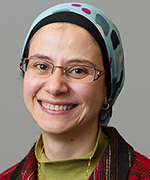
Education: Ain Shams University School of Medicine in Cairo, Egypt (M.B.BCH., M.D. equivalent); University of Maryland, Baltimore (M.S. and Ph.D. in epidemiology)
Training: Cancer Prevention Fellow, NCI-DCEG
Came to NIH: In 2007 to complete Ph.D. dissertation; in 2008 joined NCI’s Cancer Prevention Fellowship Program for postdoctoral training; promoted to staff scientist in 2011; became Earl Stadtman investigator in 2014
Website: https://irp.nih.gov/pi/shahinaz-gadalla
Research Focus: I focus on two areas of research: 1) understanding the drivers of cancer in patients with myotonic dystrophy, the most common type of adult muscular dystrophy, and applying our discoveries to improved patient care; and 2) identifying biomarkers that can predict clinical outcomes in patients who receive allogeneic hematopoietic cell transplants, and testing how to use the biomarkers to improve clinical care.
How did you become interested in science and your field? As a young student, I found myself enjoying science classes, maybe to fulfill my curiosity in understanding the world. I wanted to be a doctor. Soon after I completed my clinical training, I realized that in spite of all the great clinical advances that have been made, there is still a lot to be done. I wanted to help direct patient care through research. After considering different options, I decided to complement my medical education with a degree in epidemiology. This provided me with the skills needed for proper research methodology.
What significant discoveries have you made? I published the first epidemiological evidence that patients with myotonic dystrophy are at high risk of certain cancers (JAMA 306:2480–2486, 2011). For my work in hematopoietic-cell transplantation, I discovered that, in young patients with severe aplastic anemia, longer donor leukocyte telomere length was associated with higher post-transplant survival (JAMA 313:594–602, 2015).
What are the advantages to working in the NIH IRP? I enjoy the stimulating scientific environment and the opportunity for team science.
What is most exciting about your work? Science is all about excitement—from finding the research question, to designing the study, to collecting and analyzing the data, to reaching an answer. What I find most exciting is when our findings have clinical applicability.
What’s hot in your field right now? Understanding disease heterogeneity and identifying modifiers of risk.
Would you like to tell us anything else? I want to tell young scientists “Make sure you love and enjoy what you do.”
What do you like to do outside of work? Spend time with friends and family.
If I had more time I would…Engage more in activities to help children with special needs.
What’s the hardest lesson you ever had to learn? You don’t know what life is going to give you or take from you. Be prepared and accommodative, and keep going.
ROMINA GOLDSZMID, PH.D., NCI
Earl Stadtman Investigator, Cancer and Inflammation Program, National Cancer Institute–Center for Cancer Research; Adjunct Investigator, Laboratory of Parasitic Diseases, National Institute of Allergy and Infectious Diseases

Education: University of Buenos Aires, Buenos Aires, Argentina (M.S. in biochemistry; Ph.D. in tumor immunology)
Training: Visiting student, Laboratory of Cellular Physiology and Immunology, Rockefeller University (New York); postdoctoral visiting fellow, Laboratory of Parasitic Diseases, National Institute of Allergy and Infectious Diseases
Came to NIH: In 2004 for training; became a staff scientist in NCI’s Cancer and Inflammation Program in 2009 and a Stadtman Investigator in 2015.
Website: https://ccr.cancer.gov/romina-goldszmid
Research Focus: I am trying to understand the mechanisms governing the development, functional maturation, and dynamics of the mononuclear phagocyte (MP) cellular network (including dendritic cells, monocytes, and macrophages). Targeting the MP network is a powerful way to manipulate the outcome of immune responses—for example, to improve cancer immunotherapy. My lab is investigating the relative contributions of distinct MP populations and the critical signals that regulate them during tumor development, response to cancer therapy, or encounters with pathogens. We are particularly interested in the role of the microbiota [RG1] (the body’s microbial communities). We perform comparative studies using cancer and infection models to identify mechanistic links among commensal microbes, MPs, and systemic inflammation and their impact on the response to cancer therapy or to pathogens.
How did you become interested in science and your field? As a kid, I would say, “When I grow up I want…to discover new drugs to cure cancer.” I started college thinking that I would focus on genetics to understand cancer better, but once I took my first immunology class, I became fascinated by the immune system. I wondered why it couldn’t fight cancer the same way it could fight invading pathogens. I started my research career working on cancer vaccines, and then turned my attention to immunity and infection, and finally to a combination of both.
Have you made significant discoveries? My colleagues and I showed for the first time that the gut microbiota control the response to cancer immunotherapy and chemotherapy by modulating myeloid-cell functions in the tumor microenvironment (Science 342:967–970, 2013). At the same time, another paper showed complementary findings (Science 342:971–976, 2013). Although this work needs to be validated in human studies, it may help us understand why anticancer drugs do or don’t work and why only some patients benefit from immunotherapeutic approaches.
What are the advantages to working in the NIH IRP? It’s a playground for scientists! We have amazing resources (state-of-the-art facilities, equipment, techniques), and we are surrounded by experts in many fields who are willing to share their knowledge. Also, being in close proximity to a clinical-research program offers a unique opportunity to validate and translate our basic findings into clinically relevant ones.
What is most exciting about your work? The creative freedom and that I’m constantly learning from my peers, my mentors, and my students. Also, one of the beauties of being a scientist, particularly at NIH, is the opportunity to interact with culturally diverse people from all over the world.
What’s hot in your field right now? Cancer immunotherapy. It has shifted the paradigm from targeting the tumor to targeting the patient’s immune system. There has also been an explosion in the microbiome field. We know more about the interaction between commensal microbes and the host immune system. The microbiota has emerged as a plausible means to improve cancer therapy.
What do you like to do outside of work? I enjoy being a mom! I have a two-year-old son, so most of my time outside of work is devoted to him and my husband. I also like dancing tango, reading, traveling, cinema, and theater.
If I had more time I would … Dance more, travel more, read more, and most importantly I would spend more time with my family and friends both here and back home in Argentina.
What’s the hardest lesson you ever had to learn? When we are passionate about what we do, we enjoy and we suffer with the same intensity.
What about you would surprise most people? I used to be an actress and split the days (and nights) between the lab and the stage. I was part of a theater company that brought plays to schools and public libraries in disadvantaged areas, orphanages, and retirement homes. It was one of the most rewarding experiences I’ve ever had.
ASTRID HAASE, M.D., PH.D., NIDDK
Earl Stadtman Investigator, Acting Section Chief, RNA Biology Section, Laboratory of Cell and Molecular Biology, National Institute of Diabetes and Digestive and Kidney Diseases
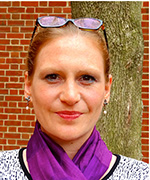
Education: University of Vienna, Austria (M.D.); University of Basel, Switzerland (Ph.D. in biochemistry)
Training: Postdoctoral fellow, Cold Spring Harbor Laboratory (Cold Spring Harbor, N.Y.)
Came to NIH: In 2015
Website: https://irp.nih.gov/pi/astrid-haase
Research Focus: My group aims to understand the fundamental mechanisms that survey and guard genomic integrity. Our genomes are massive databases that hold all the information required to create cells, tissues, and organs. Faithful transmission of this genomic information is imperative for life. We study how small, noncoding RNAs guard the genomic stability of our most precious cells in the germline. In germ cells, P-element-induced wimpy testis (PIWI)–interacting small RNAs (piRNAs) guide their PIWI protein partners to silence mobile genetic elements (transposons) at transcriptional and post-transcriptional levels, directing chromatin modifications or promoting RNA decay. Although recent advances have provided a framework for what resembles a small RNA-based immune system, further studies are required to elucidate the many molecular innovations that enable the discrimination of transposons from host genes and the efficient selective silencing of genetic mobility.
How did you become interested in science and your field? During my medical studies, I felt the urgent need for a better understanding of the molecular underpinnings of diseases. I also wished to contribute to improved diagnostics and therapies. Dr. Witek Filipowicz, my Ph.D. supervisor, introduced me to the field of small, noncoding RNAs and their emerging role in gene silencing–a phenomenon termed RNA interference (RNAi). He was a pioneer in the novel field of RNAi, and I was fortunate to join this exciting field in its infancy. In less than a decade, microRNAs (miRNAs) have emerged as potent regulators of gene expression in development and disease; small, interfering RNAs (siRNAs) have taught us new tricks about viral defense; and the application of RNAi technologies have opened unanticipated possibilities for genome-wide screens and targeted therapies. After graduation, I joined Dr. Greg Hannon’s group at the Cold Spring Harbor Laboratory to continue research on mechanisms of small-RNA silencing. Dr. Hannon is one of the fathers of RNAi. His laboratory discovered Dicer [ribonuclease III], the enzyme responsible for miRNA and siRNA biogenesis; identified Argonaute proteins as the catalytic engine of RNAi; and revealed a novel class of small RNAs, piRNAs, that protect the integrity of germline genomes. Greg is a visionary and an inspiring mentor.
What significant discoveries have you made? During my graduate work, I discovered the TAR-RNA binding protein (TRBP) as an essential partner of human Dicer and defined its role in miRNA silencing. Dicer is a multidomain enzyme that generates small RNAs for gene silencing. As a postdoc, I identified the novel nuclease activity of PLD6 [phospholipase D 6]/”Zucchini”and characterized its function in piRNA biogenesis. My previous work contributed to our current understanding of small-RNA silencing mechanisms. My group is continuing to expand our contribution to the field.
What are the advantages to working in the intramural research program (IRP)? The stable core funding of the NIH IRP enables us to rapidly initiate new projects in response to the fast pace of scientific progress. The IRP empowers us to take risks and to conquer novel scientific ground. Above all, the IRP creates the basis for open discussions, interdisciplinary collaborations, and creative solutions that can drive transformative research.
What is most exciting about your work? Starting your own group as a tenure-track investigator is a dream come true for many young scientists. It is a unique opportunity to explore fundamental biological concepts, translate these principles into technology and therapy, and share your ideas with colleagues and students.
If I had more time I would …Travel to explore places and meet interesting people.
What’s an important lesson you learned? I had the privilege to meet a few truly exceptional scientists. They were curious, open-minded, and respectful. They always gave their best and expected the same from others. I learned that truly brilliant minds achieve exceptional things through hard work and dedication, and always strive to do better.
KATRIN D. MAYER-BARBER, PH.D., NIAID
Earl Stadtman Investigator, Laboratory of Clinical Infectious Disease, National Institute of Allergy and Infectious Diseases
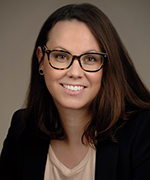
Education: University of Würzburg in Würzburg, Germany (Ph.D. in biology); thesis work at the Trudeau Institute in Saranac Lake, N.Y.
Training: Postdoctoral fellow, Laboratory of Parasitic Diseases, NIAID
Came to NIH: For training in 2007
Website: https://www.niaid.nih.gov/lab-sections/5549
Research Focus: My lab is studying how inflammation is regulated at the cellular level, which innate immune cells participate in certain types of inflammatory responses, and how the inflammatory rules of engagement can determine the outcome of pulmonary infections. If we understand the underlying cellular immunology of inflammation, we could come up with treatment strategies for infections that target the host inflammatory pathways rather than the microbes themselves. This approach is a particularly timely given the increase in multidrug[-resistant] and extremely drug-resistant pathogens, including tuberculosis.
How did you become interested in science and your field? When I was a first grader, I loved playing in the grassy fields next to our house in Germany. My favorite thing was making “grass and flower soup” in my pretend outdoor cooking area. Routinely my eyes would start itching, my nose would run, hives would develop on my arm, and finally my eyes would swell shut. It turned out that I had severe hay fever, allergies, and atopic dermatitis. I became very curious about how allergies work. I learned about cells and lipid mediators and cytokines that can control the allergic reactions. In fact, the subject of my final thesis in biology in high school was a detailed explanation of my own allergies and how allergic reactions come about. I continued this interest at university when I did a rotation in an immunology lab that studied allergic airway inflammation in mice. For my Ph.D. and postdoctoral work, I studied inflammation in pulmonary viral and bacterial infections. You could say that I have been hooked on immunology for a very long time.
Have you made any significant discoveries? It is always hard to judge how significant a given finding will turn out to be. If I had to point something out, I believe my proof-of-concept studies with Alan Sher (NIAID) exemplified very nicely how modulating the host-inflammatory response can alter disease outcome for the better in tuberculosis. In other words, manipulating the immune system’s inflammatory response, rather than the bacteria themselves, could be an effective treatment strategy. Of course, this concept still needs to be validated in human clinical studies.
What are the advantages to working in the NIH IRP? The NIH IRP offers absolute scientific freedom and gives us the ability to take projects to the next level. Say your research leads you into a completely new area; chances are that someone in the IRP is a world leader in that field and a potential collaborator. It’s great being able to translate basic-research findings into clinical studies, in conjunction with the NIH Clinical Center and worldwide networks of collaborators. The scientific and sense of infinite possibilities that are reflected in the impact and scope of the research undertaken. I feel this is a place where I can be boundlessly creative.
What’s hot in your field right now? Trying to understand the inflammatory events that happen during the first couple of weeks after exposure to Mycobacterium tuberculosis before adaptive immunity kicks in. And, more important, learning how these early events shape subsequent disease outcomes.
What do you like to do outside of work? Before we had our son, my husband (Daniel Barber, who is also a 2010 Stadtman Tenure-Track Investigator in NIAID) and I liked riding our motorcycles through the countryside. Nowadays we just like to spend time with our three-year-old son.
If I had more time I would …Travel more with my family and show our son as many different places and cultures as possible.
ROBIN STANLEY, PH.D., NIEHS
Earl Stadtman Investigator, Head, Nucleolar Integrity Group, National Institute of Environmental Health Sciences
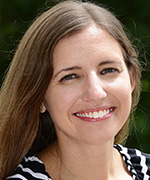
Education: Yale University, New Haven, Conn. (Ph.D. in molecular biophysics and biochemistry)
Training: Postdoctoral fellow at the National Institute of Diabetes and Digestive and Kidney Diseases
Came to NIH: In 2009 for training; In 2014, joined NIEHS
Website: https://www.niehs.nih.gov/research/atniehs/labs/stl/pi/nucleolar/
Research Focus: My lab focuses on understanding the dynamics of the nucleolus with a particular emphasis on how it regulates the ribosome assembly pathway. Eukaryotic ribosome biogenesis is a complex process; dysfunction of this pathway gives rise to a group of human diseases known as ribosomopathies; and deregulation of the pathway had been linked with human cancers. We are taking a multidisciplinary approach by combining structural, molecular, and cellular biology.
How did you become interested in science and your field? My two favorite subjects growing up were always science and math. When I went to college (University of North Carolina at Charlotte), I couldn’t decide between the two so I double-majored in chemistry and math. During my freshman year in college I started searching for a chemistry research lab to join, and my one big requirement for the lab was that it require lots of math. I ended up working in an X-ray crystallography lab. I have been hooked on crystallography ever since solving my first crystal structure of a small organic molecule. To me, the most exciting thing about crystallography is looking at electron-density maps and being the first to visualize what a molecule looks like at atomic resolution.
Have you made any significant discoveries? One of my most significant discoveries was while I was in graduate school. We were able to obtain well-diffracting crystals of the bacterial 70S ribosome and solved several co-crystal structures. The first structure was of the ribosome bound to elongation factor P (EF-P), an essential protein that prevents the ribosome from stalling and stimulates the formation of the first peptide bond in protein synthesis. Prior to our work the exact role of this factor was poorly understood, and the binding site was incorrectly predicted. I also solved the co-crystal structures of the ribosome bound to the antibiotics viomycin and capreomycin, which are used against multidrug-resistant tuberculosis.
What are the advantages to working in the NIH IRP? After beginning my postdoctoral studies at NIDDK, I quickly realized that the NIH IRP was an amazing scientific community, and I decided I never wanted to leave. For me, the biggest advantage of being part of the NIH IRP is having stable funding and not having to apply for research grants. I get to devote most of my time and resources to carrying out research at the bench, mentoring trainees, and doing high-risk/high-reward research. Moreover, the NIH IRP has world-leading resources across all fields, which allows one to conduct multidisciplinary research.
What is most exciting about your work? Running my own independent lab is super exciting. It is so much fun to come up with a hypothesis and then get to go into the lab and test it out.
Is there anything you can look back on now and realize it was significant? When I was an undergraduate, I got to spend three summers working at the Naval Research Lab (Washington, D.C.) with Jerome and Isabella Karle, two of the world’s greatest crystallographers. I don’t think I realized at the time what an amazing opportunity that was, but the experience inspired me to pursue a Ph.D. and run my own lab.
What’s hot in structural biology right now? Cryo-electron microscopy (cryoEM), in which cells and tissues are studied at very low temperatures. CryoEM lets you see structures at near-atomic resolution. For the first time, we have high-resolution snapshots of pre-ribosome particles bound to assembly factors. I am starting to learn cryoEM myself, and I am excited about the new microscope that we are getting at NIEHS.
What do you like to do outside of work? Spending time with my husband and four-year-old daughter; going for long runs.
If I had more time I would … Sleep. After catching up on sleep, I would go to the library and grab a huge stack of books to read just for fun. Before science experiments took over my life I was a voracious reader and always had my nose stuck in a book. I’m a huge fan of 19th-century female authors—Jane Austen, Elizabeth Gaskell, the Brontë sisters, and Louisa May Alcott. I have read Pride and Prejudice, Jane Eyre, Wives and Daughters, and Little Women many, many times, and I can’t wait to read them again with my daughter in a few years!
What’s the hardest lesson you ever had to learn? That protein crystallography (especially of tricky macromolecular samples) requires lots and lots of patience and has an incredibly high failure rate.
What about you would surprise most people? I have run the Boston Marathon three times.
BRITTON TRABERT, PH.D., NCI-DCEG
Earl Stadtman Investigator, Metabolic Epidemiology Branch, National Cancer Institute—Division of Cancer Epidemiology and Genetics
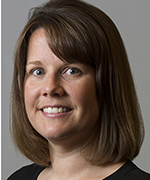
Education: Emory University, Atlanta (M.S.P.H. in epidemiology); University of Michigan, Ann Arbor, Mich. (M.S. in biostatistics); University of Washington, Seattle (Ph.D. in epidemiology)
Training: Sallie Rosen Kaplan Postdoctoral Fellow, NCI
Came to NIH: In 2009 for training
Website: https://irp.nih.gov/pi/britton-trabert
Research Focus: My research concentrates on the role of exogenous and endogenous hormones in cancer and the relationship between chronic inflammation and gynecologic cancers. I worked with laboratory colleagues at the Frederick National Laboratory for Cancer Research to develop assays for measuring androgens and androgen metabolites as well as progesterone and progesterone metabolites. We are using these assays to evaluate how prediagnostic androgen and progesterone concentrations influence female cancer risk. We are also studying the long-term effects of fertility treatment, in particular whether ovulation-inducing drugs or in vitro fertilization procedures (which may result in ovarian trauma and inflammation) are associated with increased cancer risk. We are attempting to clarify how chronic inflammation is linked to the risk of ovarian and endometrial cancer. In addition, we are trying to understand the role of anti-inflammatory medications, particularly low-dose aspirin, in reducing ovarian cancer risk.
How did you become interested in science and your field? I have always gravitated toward science and math and have taken science electives from astronomy to zoonotic diseases. My journey into epidemiology began with an undergraduate course entitled “Insects and Our Health.” My research has evolved from studying sexually transmitted infections and benign reproductive morbidities to investigating the hormonal and inflammatory etiology of cancer. I have always wanted to conduct research that can improve the health of women.
What is most exciting about your work?That I get to do something I really enjoy. I can take advantage of the technological advances to measure circulating hormones at low concentrations in postmenopausal women. Collaborators in my division, colleagues at the Frederick National Laboratory for Cancer Research, and I developed highly sensitive and specific assays to measure androgens and androgen metabolites as well as progesterone and progesterone metabolites. Androgens and progesterone are precursors of estrogen metabolites. Our work is helping to advance scientific understanding of the hormonal etiology of cancers in both women and men.
Have you made any significant discoveries? We determined that aspirin may reduce the risk of ovarian cancer and that postmenopausal circulating estrogens are associated with rare subtypes of ovarian cancer. I look forward to using the novel and highly sensitive androgen and progesterone assays we developed to further clarify the hormonal etiology of female cancer.
What attracted you to the NIH IRP? That there was a concentration of research devoted to understanding the hormonal and reproductive etiology of cancer.
What’s hot in your field right now? Disease heterogeneity, which is particularly relevant for ovarian cancer. Ovarian cancer is a very heterogeneous disease, and some ovarian cancers likely originate from the fallopian tubes. Identifying and clarifying disease heterogeneity will help us to better understand important etiologic clues that will inform ovarian cancer prevention, early detection, and treatment.
What do you like to do outside of work? Cook, entertain, and work on projects around the house. I am currently restoring the wood doors in our 1920s row house.
Complete this sentence: If I had more time I would … Go to medical school. I’d train in obstetrics and gynecology with a focus on gynecologic oncology; such training would complement my research and would likely give me a different perspective. As I build my research network, I find that I have the most to learn from pathologists and gynecologic oncologists.
What’s the hardest lesson you’ve ever had to learn? That simply doing high-quality research isn’t enough. We have to be the champions of our own research findings. Communicating important findings to the public takes both time and support.
What about you might surprise most people? That I am handy. I can fix almost anything from doorknobs to toilets. My current favorite tool is the laser level.
Is there anything else you’d like to add? Just to say thank you for your interest in me and my research. It is nice to talk about the person in addition to the science that I do on a daily basis.
This page was last updated on Monday, April 11, 2022
